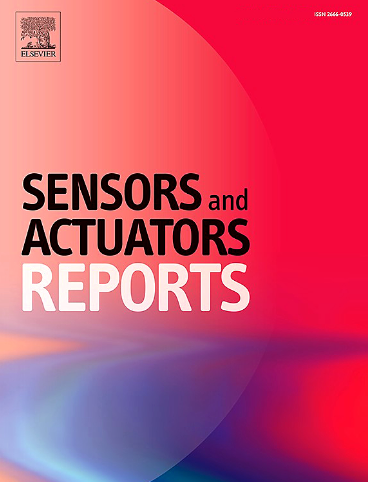Surface reaction mechanism and characteristics of 2-dimensional TiO2 and 0-dimensional Ag nanocomposites specialized for H2S gas sensing at room temperature
IF 7.6
Q1 BIOTECHNOLOGY & APPLIED MICROBIOLOGY
引用次数: 0
Abstract
In this study, we provide the synthesis of pristine TiO2 nanosheets (NSs) via a simple flux method and their decoration with Ag nanoparticles (NPs) using a hydrothermal method for room-temperature H2S gas sensing. Gas sensing experiments were conducted at 25 °C, evaluating the response of the Ag NPs-decorated TiO2 NSs to various gases. Results demonstrated the gas sensor exhibited a superior response to H2S gas compared to other gases, outperforming the pristine TiO2 NSs gas sensor. Additionally, its response to H2S gas surpassed that of the TiO2 NSs gas sensor, highlighting the promising role of Ag decoration for H2S gas detection. Sensing behavior in humid atmosphere was also investigated. The improved H2S gas sensing performance can be attributed to the catalytic effect of Ag, the formation of Ag/TiO2 heterojunctions, and the large surface area of the TiO2 NSs. This study introduces a straightforward approach to enhance the gas sensing capabilities of metal oxide NSs.

室温下H2S气敏专用二维TiO2和零维Ag纳米复合材料的表面反应机理与特性
在这项研究中,我们通过简单的通量法合成了原始的TiO2纳米片(NSs),并利用水热法用银纳米颗粒(NPs)修饰了它们,用于室温H2S气体传感。在25°C下进行气敏实验,评估了Ag nps修饰的TiO2 NSs对不同气体的响应。结果表明,与其他气体相比,该气体传感器对H2S气体表现出更好的响应,优于原始TiO2 NSs气体传感器。此外,其对H2S气体的响应超过了TiO2 NSs气体传感器,这凸显了Ag装饰在H2S气体检测中的重要作用。还研究了在潮湿大气中的传感行为。Ag的催化作用、Ag/TiO2异质结的形成以及TiO2 NSs的大表面积提高了H2S气敏性能。本研究介绍了一种增强金属氧化物NSs气体传感能力的直接方法。
本文章由计算机程序翻译,如有差异,请以英文原文为准。
求助全文
约1分钟内获得全文
求助全文
来源期刊

Sensors and Actuators Reports
Multiple-
CiteScore
9.60
自引率
0.00%
发文量
60
审稿时长
49 days
期刊介绍:
Sensors and Actuators Reports is a peer-reviewed open access journal launched out from the Sensors and Actuators journal family. Sensors and Actuators Reports is dedicated to publishing new and original works in the field of all type of sensors and actuators, including bio-, chemical-, physical-, and nano- sensors and actuators, which demonstrates significant progress beyond the current state of the art. The journal regularly publishes original research papers, reviews, and short communications.
For research papers and short communications, the journal aims to publish the new and original work supported by experimental results and as such purely theoretical works are not accepted.
 求助内容:
求助内容: 应助结果提醒方式:
应助结果提醒方式:


